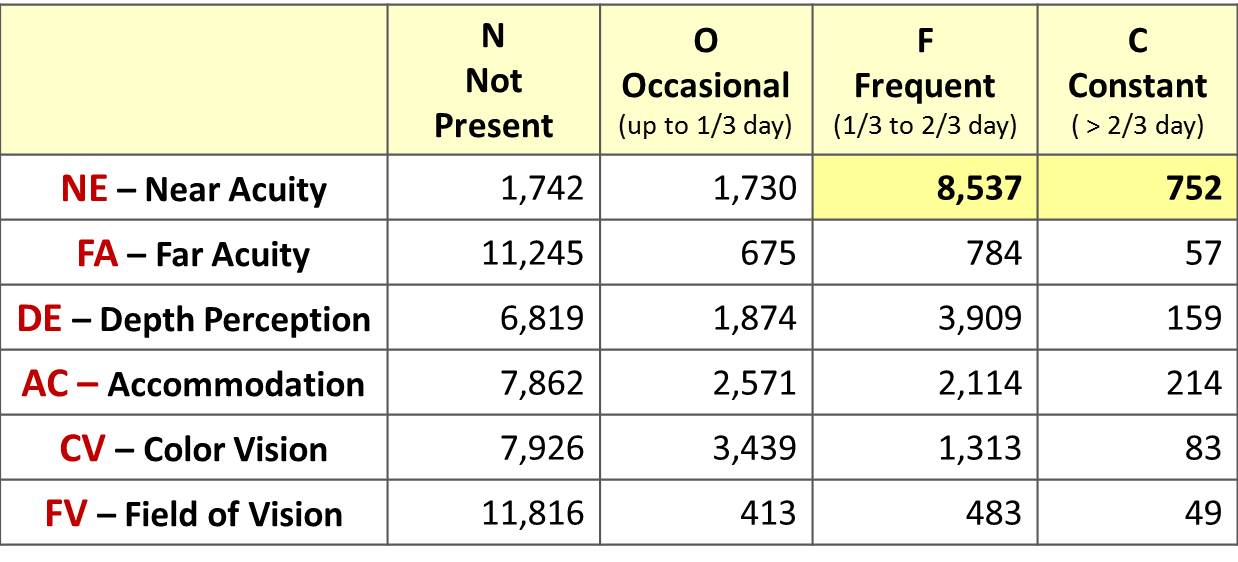Visual Impairments
Adjust Physical Demands: Near and Far Acuity, Depth Perception, Color Vision, Accommodation, and Field of Vision
Adjust Environmental Conditions: High Places, Moving Mechanical Parts, Electric Shock, Explosion, Radiation, Toxic / Caustic, and Other Hazards
Adjust Aptitudes: P, Q, E, and C
Rationale: Be careful choosing less than frequent near acuity, since so many occupations are rated in this category. If less than frequent near acuity is chosen, 72.8% of occupations (n=9,289) are filtered out. With low vision aids, magnified images, and text-to-speech and text-to-touch computer output devices, less than frequent ability to use near acuity can sometimes be offset through assistive technology or job modification. Protection of the worker from "unseen" hazards is important, as well as isolation from circumstances which could further deteriorate residual vision. Certain aptitude values may also be impacted, especially when efficient performance is required.
Impact: Always consider job modifications, adaptive devices, and job restructuring. Be less restrictive in the selection of residual capacities than might appear to be indicated. Otherwise, some good opportunities might be ruled out inadvertently.
PHYSICAL DEMANDS - Frequency Counts [Full Table]
Below is the frequency with which each factor is rated in the DOT
